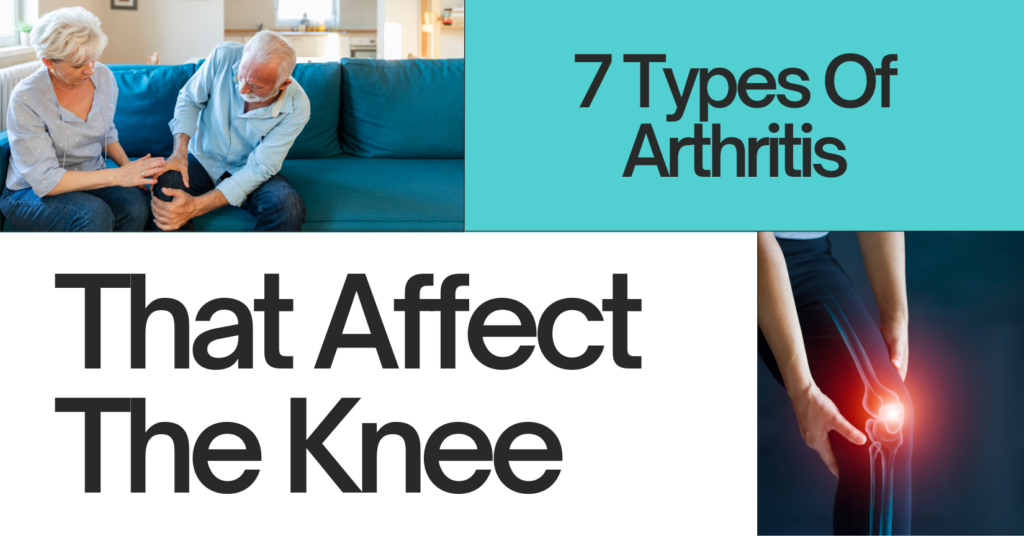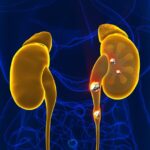
The condition known as arthritis, which is characterised by inflammation of the joints, encompasses a wide range of manifestations, each of which has its own unique characteristics and implications. Arthritis is a complex and multifaceted condition. It is important to note that among the numerous types of arthritis, there are several that specifically affect the knee joint, causing significant changes to both its structure and its function. For the purposes of accurate diagnosis, effective treatment, and optimal management strategies, it is of the utmost importance to have a thorough understanding of these various classifications of knee arthritis.
1. Osteoarthritis
The knee is most commonly affected by osteoarthritis (OA), which is also commonly known as degenerative joint disease. This type of arthritis is the most common type of arthritis. It is distinguished by the gradual deterioration and erosion of the protective cartilage that cushions the ends of bones within the joint. This condition is known as osteoarthritis. As the cartilage wears away, the bones that lie beneath it may start to rub against each other, which can lead to discomfort, stiffness, swelling, and the development of bone spurs. Osteoarthritis is typically thought of as a consequence of ageing and chronic wear and tear on the knee joint. However, genetic factors and previous injuries can also contribute to the development of osteoarthritis.
2. Post-Traumatic Arthritis
Post-traumatic arthritis is a subtype of osteoarthritis that develops as a result of previous knee injuries or trauma. It is a common condition that affects young people. It is possible for such injuries to include tears in the ligaments, damage to the meniscus, or fractures, all of which have the potential to upset the delicate balance of the knee joint and speed up the degenerative process. It is possible that the residual effects of the initial trauma will, over the course of time, lead to cartilage deterioration, joint instability, and the onset of osteoarthritis symptoms, which may appear years after the initial injury.
3. Rheumatoid Arthritis
Rheumatoid arthritis, also known as RA, is an autoimmune disorder that is characterised by persistent inflammation of the synovial lining that surrounds the joints. In rheumatoid arthritis (RA), the immune system of the body attacks healthy joint tissues in error, which leads to swelling, pain, and stiffness in the joints, as well as the gradual erosion of cartilage and bone over time. While rheumatoid arthritis (RA) can affect any joint in the body, it most commonly affects the knees symmetrically, meaning that it affects both joints at the same time. Individuals who suffer from rheumatoid arthritis may also experience systemic manifestations, such as fatigue, fever, and malaise, in addition to joint symptoms.
4. Psoriatic Arthritis
Individuals who suffer from the persistent skin condition known as psoriasis are particularly susceptible to developing psoriatic arthritis, which is a specific type of inflammatory arthritis. Joint pain, stiffness, swelling, and tenderness are some of the symptoms that are associated with this autoimmune disorder, which can affect a variety of joints throughout the body, including and including the knees. It is possible for psoriatic arthritis to manifest with distinctive characteristics, such as enthesitis (inflammation of tendon insertions) and dactylitis (swelling of entire fingers or toes), which differentiate it from other types of arthritis.
5: Gout
Gout is a metabolic disorder that is characterised by the accumulation of uric acid crystals within the joints, which ultimately results in recurrent episodes of acute inflammatory arthritis. Additionally, the knee joint may be affected by gout, despite the fact that it most frequently affects the joints of the lower extremities, including the big toe. Flares of gout are typically characterised by the sudden onset of intense pain, swelling, redness, and warmth in the joint that is affected. Flares are frequently triggered by dietary factors or metabolic disturbances.
6. Pseudogout
In contrast to gout, which is caused by the accumulation of calcium pyrophosphate crystals within the cartilage of the joint, pseudogout, which is also referred to as calcium pyrophosphate deposition disease (CPPD), is characterised by the presence of similar symptoms. It is possible for this crystal deposition to bring on acute episodes of joint inflammation and pain, which are similar to flare-ups of gout. Pseudogout is a condition that frequently affects large weight-bearing joints like the knees and has the potential to cause chronic degenerative abnormalities over time.
7. Reactive Arthritis
One form of arthritis is known as reactive arthritis, which was formerly known as Reiter’s syndrome. This form of arthritis manifests itself as a reaction to an infection that occurs in another part of the body, most commonly in the gastrointestinal or genitourinary tract. In the condition known as reactive arthritis, the immune system mounts an abnormal response to the infection, which results in inflammation, pain, and swelling of the joints. Knees are typically affected by this condition. Ocular inflammation (conjunctivitis), skin inflammation (dermatitis), and inflammation of the mucous membranes are all potential additional symptoms.
It is essential to have a comprehensive understanding of the various types of arthritis that can affect the knee in order to arrive at an accurate diagnosis, develop individualised treatment plans, and develop effective management strategies. Individuals are able to develop comprehensive plans that address their particular condition, alleviate symptoms, and optimise knee health and function over time when they work closely with healthcare providers to develop these plans.



